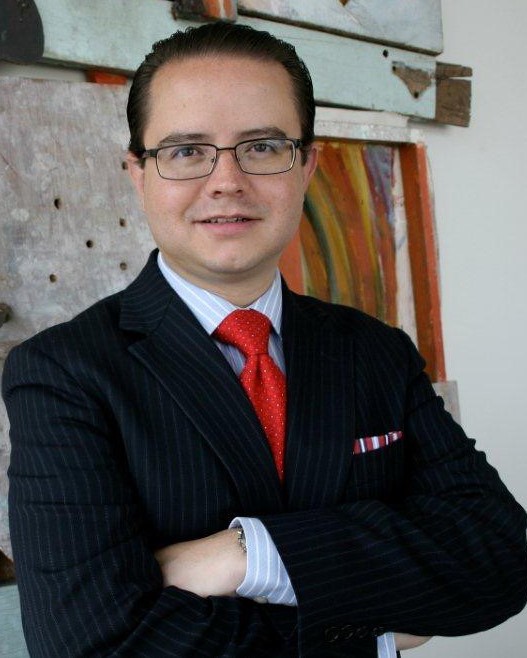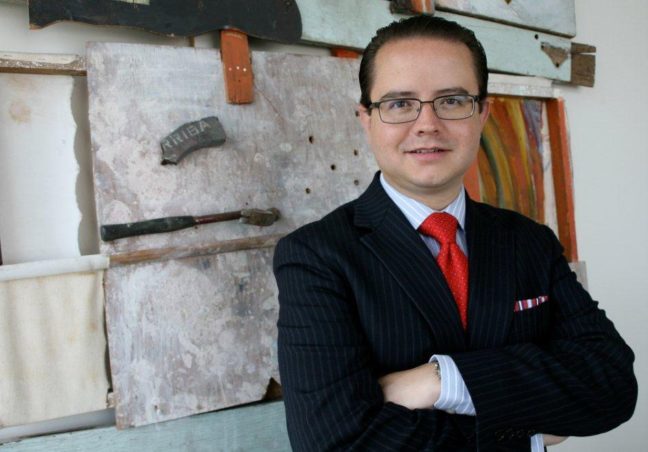Entrevista: Gunter Schwandt, un experto en el segmento del financiamiento de adquisiciones, nos da su punto de vista acerca del mercado de M&A en México.

(ESPAÑOL)
Schwandt, como experto en el segmento del financiamiento de adquisiciones, desde el punto de vista de su área de actuación ¿podría brindarnos en términos generales una visión y evaluación de la situación actual del mercado de M&A en México?
El mercado de M&A en México se ha visto favorecido en los últimos meses por diversos factores. El ambiente político actual que vivimos a nivel mundial ha traído incertidumbre pero también oportunidades en ciertos sectores, tales como telecomunicaciones, energía e infraestructura. Lo anterior se ha visto potenciado por las reformas estructurales que entraron en vigor a principios de la presente administración. No obstante lo anterior, la renegociación del Tratado de Libre Comercio con América del Norte prevista para los próximos meses, así como el proceso electoral de cara a la elección presidencial de mediados de 2018 podría traer un periodo de impasse, aunque se prevé que la inversión extranjera en el país continúe.
En el caso de las compañías mexicanas, ¿qué tipos de financiación son los más habituales para la cobertura de M&A ? ¿Qué ventajas obtienen las compañías al recurrir a financiación externa?
Las adquisiciones típicamente son fondeadas a través de una combinación de recursos propios y financiamiento externo, incluyendo créditos sindicados. Asimismo, colocaciones a través del mercado de capitales son también usuales en este tipo de operaciones, ya sea de manera inicial o como un mecanismo para sustituir la deuda que originalmente fue contratada.
Otra de las áreas en las que tiene experiencia, es en la emisión de CKDs (Certificados de Capital de Desarrollo) ¿A qué se debe la reciente popularidad que ha ganado este instrumento bursátil? ¿En qué aspecto resulta interesante y atractivo para las entidades emisoras? ¿Y para las suscriptoras?
El marco legal para los certificados de capital de desarrollo ha existido en México desde hace aproximadamente 8 años y fue creado principalmente para permitir que los fondos de pensiones mexicanos (AFOREs) pudieran invertir en estructuras similares a las de capital privado para fondear una diversidad de proyectos. El éxito ha sido tal que hoy en día existen más de 60 emisiones de CKDs en el mercado. La regulación ha tenido una etapa de evolución y mejora a lo largo de los años que ha permitido que estos fondos puedan estructurarse de manera más eficiente, otorgándole mayor flexibilidad a los administradores en términos generales. Este instrumento resulta atractivo para las emisoras al permitirles acceder al mercado de capitales para fondear e implementar un plan de negocios y levantar capital. Por otro lado, resulta interesante para los inversionistas al brindarles retornos atractivos y la tranquilidad de ser un instrumento listado que cuenta con la supervisión y visto bueno de las autoridades bursátiles.
Usted también es especialista en financiamiento inmobiliario, según los datos registrados por TTR, YTD el número de operaciones en el sector inmobiliario ha superado significativamente la cifra alcanzada en 2016. ¿Qué cree que ha podido estimular el crecimiento de la actividad en este sector?
El volumen y monto de las operaciones en el sector inmobiliario ha venido creciendo en los últimos meses debido a diversos factores. Dentro de dichos factores podemos encontrar una mayor sofisticación y maduración del mercado y de sus participantes, así como la utlización de estructuras fiscalmente eficientes, tales como las FIBRAs (Fideicomisos de Inversión en Bienes Raíces), el equivalente mexicano de los REITs estadounidenses.
Respecto a la continuación de la marcha del año en M&A, ¿cómo pronostica el cierre del ejercicio? ¿En qué medida y de qué modo cree que influirán las entidades financiadoras para el desenlace del 2017?
El pronóstico es que la actividad de M&A continúe con su trayectoria actual durante la segunda mitad de 2017. No obstante lo anterior y como lo comentamos hace un momento, es posible que diversos factores (renegociación del TLCAN, el proceso electoral presidencial que culminará a mediados de 2018, entre otros), afecten o alteren los planes y el calendario que tengan inversionistas internacionales para invertir en México.
(ENGLISH)
Schwandt, as an expert in acquisition finance, from a standpoint of your practice area, could you give as a general view and evaluation of the current M&A market in Mexico?
The M&A market in Mexico has seen positive growth during the last few months due to a number of factors. The political environment that currently exists throughout the world has brought uncertainty but also several opportunities in certain sectors, such as telecomm, energy and infrastructure. The foregoing has been supported by the structural reform package that was enacted at the beginning of the current administration. Notwithstanding the foregoing, the renegotiation of the North American Free Trade Agreement that is scheduled to occur in the next months, as well as the electoral process for the presidential election that will occur mid next year, could bring a slowdown, although it is expected that foreign investment to the country will continue during such period.
With respect to Mexican companies, what are the most common forms of financing for acquisitions? What advantages do companies obtain by seeking external financing?
Acquisitions are typically funded through a mix of own capital and external financing, including syndicated loans. Similarly, issuances through the capital markets are also usual in these types of transactions, be it initially or as a mechanism to take out the financing that was originally contracted.
Another practice area of your expertise is the issuance of CKDs (development capital certificates). What is the cause for this type of security’s recent popularity? In what aspects is it interesting and attractive for issuers? And for investors?
The legal framework for development capital certificates has existed in Mexico for approximately eight years and was created mainly to allow Mexican pension funds (AFOREs) to invest in private equity-like structures for the funding of a wide variety of projects. Currently there exist more than 60 CKD issuances in the Mexican market. The regulations have evolved and have been improved throughout the years, which has allowed these funds to be structured more efficiently, granting general partners more flexibility in general terms. This instrument has become interesting for issuers since it allows them to access the capital markets for purposes of funding and carrying out a business plan and to raise capital. It has also become interesting for investors given that they generally offer attractive returns and the ability to list a security that has been approved and is supervised by the securities regulators.
You are also a specialist in real estate financing, according to data from TTR, year to date the number of real estate transactions has significantly passed the number in 2016. What do you think may have stimulated growth of activity in this sector?
The number and amount of the transactions in the real estate industry has been growing during the last months due to several factors. Some of them include more sophistication of the participants and a more mature market, as well as the use of tax efficient structures, such as FIBRAs (Fideicomisos de Inversión en Bienes Raíces), the Mexican equivalent of a U.S. REIT.
With respect to the development of the M&A market during the year, how do you forecast the close of the current year? To what extent and how do you believe banks and other financing entities will influence the outcome of the year 2017?
It is forecasted that M&A activity will continue its current course during the second semestre of 2017. Notwithstanding the foregoing and as previously mentioned, it is possible that a number of factors (NAFTA renegotiation, the presidential electoral process that will end mid-2018, among others), will affect or alter the plans and calendar that international investors may have to invest in Mexico.
